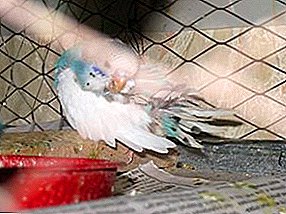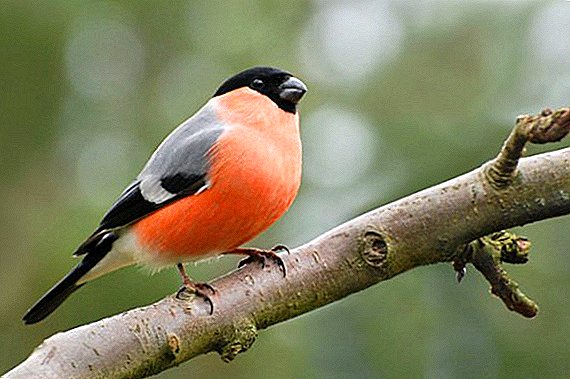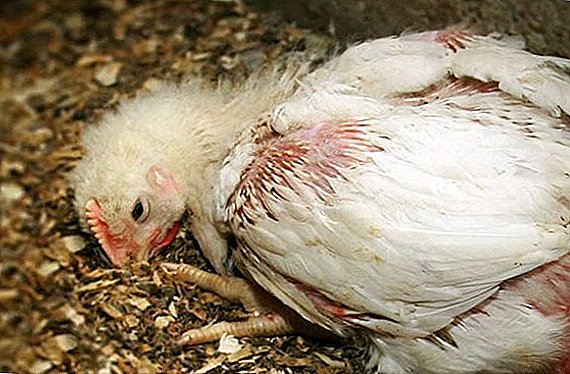
Breeding and maintenance of poultry for both personal needs and for industrial deliveries of products to the markets and shops is a very profitable activity, which allows to obtain high quality fresh meat and eggs.
Farmers often encounter the fact that birds become infected with various diseases, including syringophilosis, which is parasitic.
Therefore, it is necessary to know the main symptoms and causative agents of syringophilosis, a group of birds susceptible to the disease, in time to adopt the most effective therapeutic and preventive methods for eradicating the disease.
Syringophilosis: definition and risk groups
Syringophilosis (feather scabies, Siringophilosis, PCh) is a parasitic, chronic disease that causes feather mites to parasitize in the feathers of a sick bird.
Poultry such as chickens, turkeys, budgies, guinea fowl, ducks and wild birds such as pigeons and sparrows are susceptible to the disease.
History reference
 In the pre-revolutionary period, parasitology in Russia was fragmented, fragmentary, and untargeted. Significant studies on veterinary medicine have not been conducted.
In the pre-revolutionary period, parasitology in Russia was fragmented, fragmentary, and untargeted. Significant studies on veterinary medicine have not been conducted.
Only in the USSR was parasitology widely developed, since specialized research institutes, universities, laboratories, stations, academies were established.
Such well-known Soviet scientists as Scriabin, Yakimov, Pavlovsky, Dogel, who created 4 main scientific schools of parasitological scientists under their leadership, were engaged in the study of syringophilosis in particular, and parasitology in general.
Spread of the disease
Feather scabies are common in spring and summer, and individual outbreaks of the disease are recorded in winter. Most often, birds suffer from the disease, which live in areas with a warm climate, because the causative agents of this disease are heat-loving.
Carriers of the disease are sick chickens, as well as fallen, mite-afflicted bird feathers. Healthy chickens are infected from sick birds by direct contact.
Pathogens and degree of danger
 Thrombidiform ticks are the causative agents of syringophilosis. Syringophilus bipectinatus.
Thrombidiform ticks are the causative agents of syringophilosis. Syringophilus bipectinatus.
These mites parasitize colonies in the cavities of feather points, which are located on the body and wings of birds.
The development of parasites passes through the stages of eggs, larvae, protonymph, deutonyphs and adults. All stages of the parasites pass in a month.
Ticks reach a length of 1.1 mm and a width of 0.5 mm., have a white-matte or dark gray color. There are 5 pairs of elongated bristles on the front shield of ticks, and 2 pairs of bristles at the back.
Powerful stiletto proboscis located in front. Pincers have piercing-sucking oral apparatus, short legs in the form of a cone.
At the very beginning of the disease, only females live in feather feathers, which lay eggs, later males join them. Mites get into the mouths of healthy bird feathers through channels in the form of a slit, which are located in the feather papillae. More than 1000 parasites can be in one spot of the chicken feather at a time.
The external environment contributes to the death of parasites, so at room temperature they die a week, and in places of parasitism are viable up to 2 weeks.
Ticks are extremely susceptible to chemical attack:
- chlorophos solution (1%) kills them in 2 minutes;
- polychloropinene solution (3%) - for 3 minutes;
- creolin solution (5%) - in 4 minutes.
 You must have heard about Master Gray chickens. Maybe you should already know the reliable information?
You must have heard about Master Gray chickens. Maybe you should already know the reliable information?You can read more about puffbreads here: //selo.guru/ptitsa/bolezni-ptitsa/nasekomye/puhoperoedy.html.
Parasites also die at high temperatures:
- at 50 ° C - in one minute;
- at 60 ° C - in 10 seconds.
During the autumn molt, mites from dropped feathers move to the new-grown and continue to parasitize, lay eggs in the winter, hatch and hit the birds again in the summer.
Disease of chickens by syringophilosis causes economic damage to poultry farms and industrial farms, because it leads to a decrease or cessation of egg production of birds, depletion of sick individuals.
The course of the disease and its symptoms
 Syringophilosis affects chickens starting at 5 months of age, since it is at this time that birds form contour feathers and ticks breed massively in the feather point.
Syringophilosis affects chickens starting at 5 months of age, since it is at this time that birds form contour feathers and ticks breed massively in the feather point.
The disease begins on the steering wings and then quickly spreads to all the other feathers of the chickens, which leads to their premature falling off or breaking off.
The following can be distinguished symptoms of syringophilia in poultry:
- itching;
- nervousness;
- loss of feathers in large quantities (primarily flywheels and steering);
- breaking of feathers;
- plumage loses shine;
- the core of the feathers loses its transparency, darkens and bends;
- sick birds peck themselves and scratch;
- anemia;
- pallor of earrings, mucous, crest;
- the presence of bare skin with redness or wounds;
- inflammation of feather bags;
- bird depletion;
- eating disorders, lack of appetite;
- the bird stops laying eggs or egg production is sharply reduced.
The incubation period of the disease is 3 months.
Diagnostics
 The final diagnosis can only veterinarian based on comprehensive data analysis, analysis of the clinical picture, comparing them with the clinical signs of syringophilosis.
The final diagnosis can only veterinarian based on comprehensive data analysis, analysis of the clinical picture, comparing them with the clinical signs of syringophilosis.
The object of the study is the spontaneously fallen out or specially extracted feather of a sick bird, which in appearance differs from healthy plumage.
When visually examined, parasitic ochin is opaque and contains a grayish-yellow or brownish-yellow mass. For a microscopic examination, the ocin is opened with an oblique incision, the greyish yellow dust mass is poured onto a glass slide and examined in a crushed drop with twice the amount of kerosene or water.
An adult tick can be seen without the aid of a microscope, since it is large (1 mm), oval, elongated, dark gray or milky white.
Treatment and preventive measures
Therapeutic and prophylactic measures in syringophilosis:

- The following drugs are used for treatment: diazinon, amidofos, cyodrin, baytex, tivit, icosan, stomazan and others;
- in isolated cases of disease, a bird that is affected by ticks should be slaughtered in order to avoid infection of healthy chickens;
- with widespread syringophilism, sick birds are replaced with healthy offspring;
- feathers dropped from diseased birds must be collected and burned;
- feeders, cages, perches, drinkers, territory, premises, bird care products are thoroughly disinfected (every 10 days);
- once in 2 weeks to clean the litter in poultry houses;
- every 2 weeks burn cells.
Parasitic diseases of birds, which include syringophilosis, not only causes discomfort to sick individuals and quickly spreads to healthy birds, but also causes economic damage to poultry farms and farms, meat and egg industries, and reduces egg laying productivity.
The disease should not be allowed to take its courseFor the successful elimination of syringophillosis, it is necessary to identify the disease in time and carry out all the necessary treatment and preventive measures.












